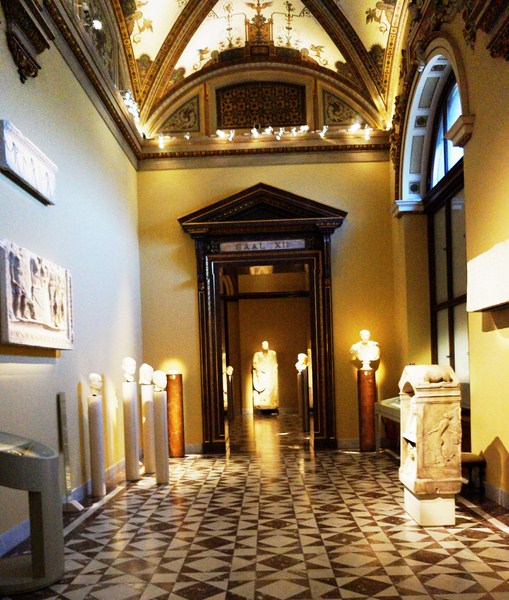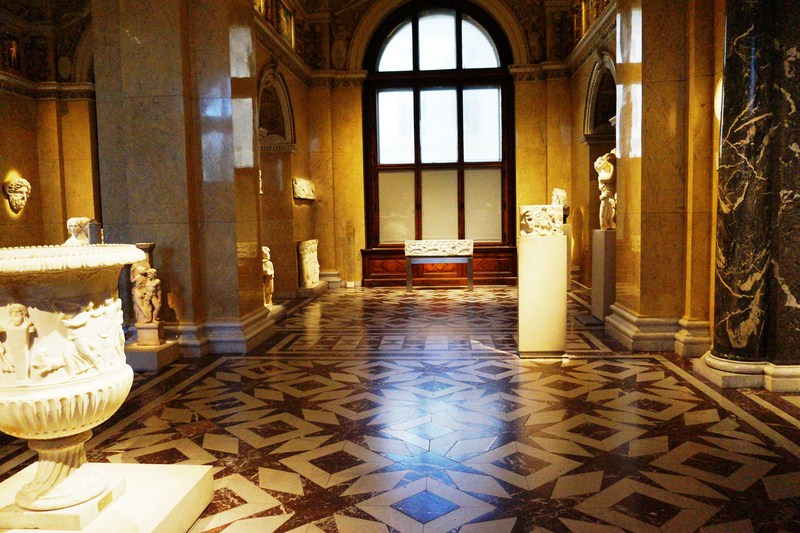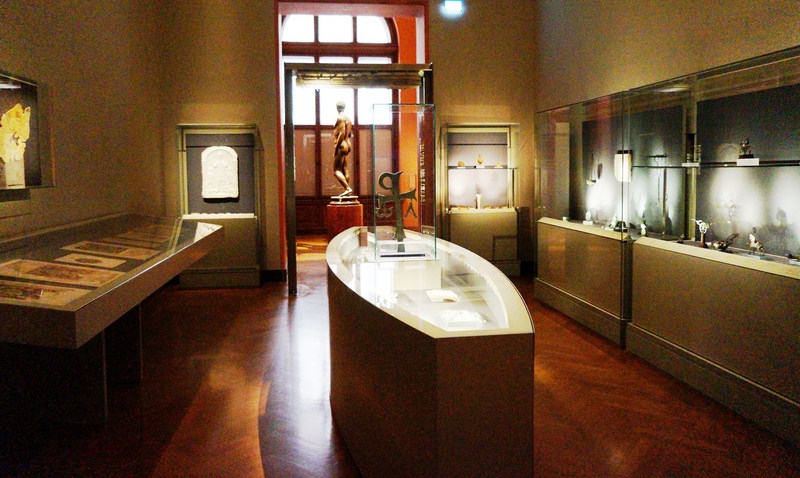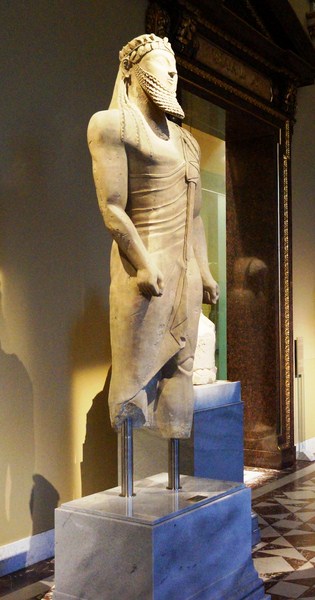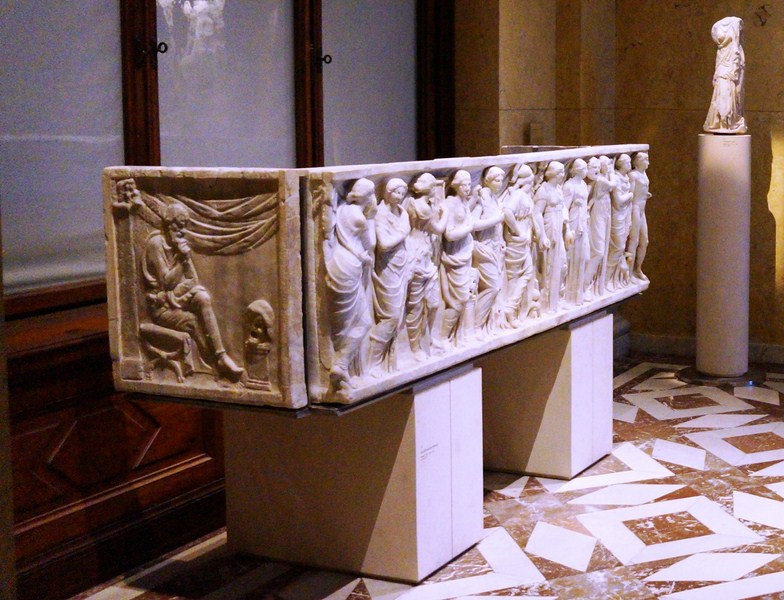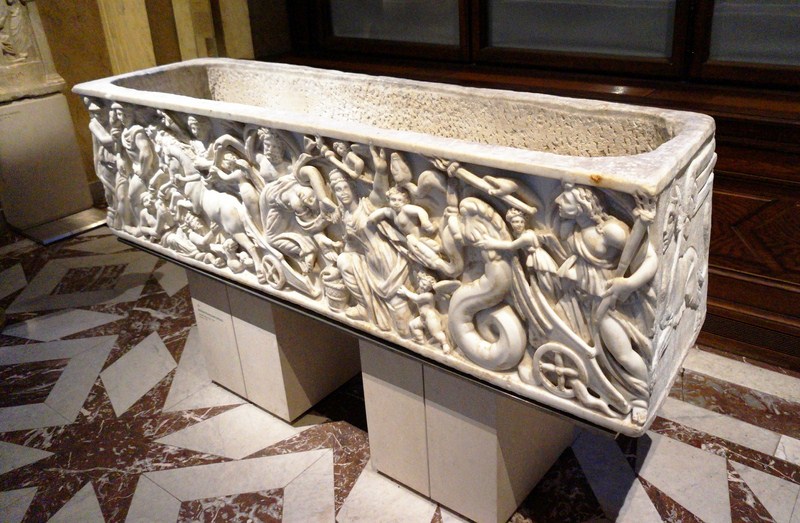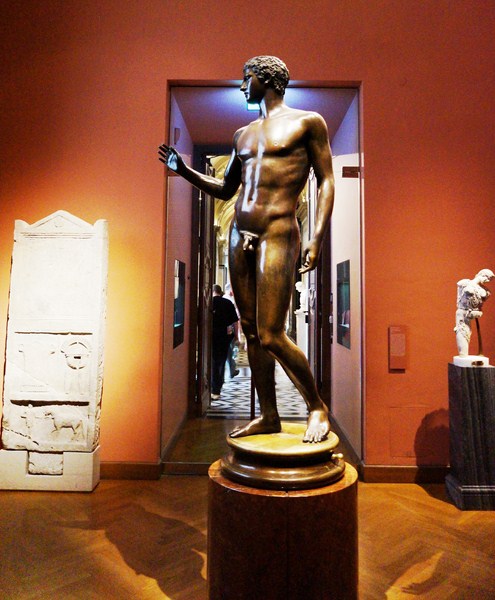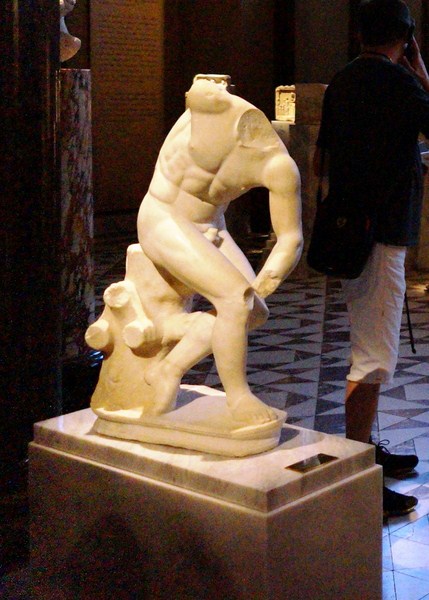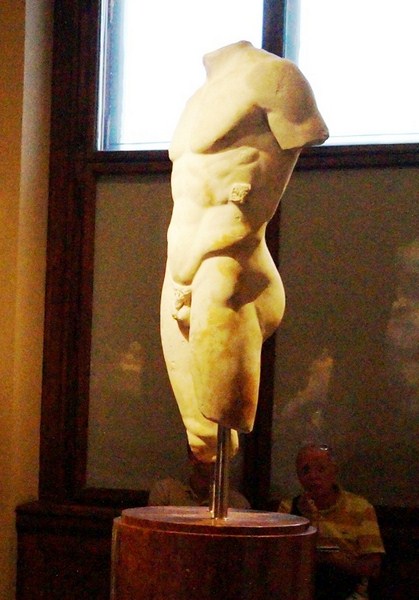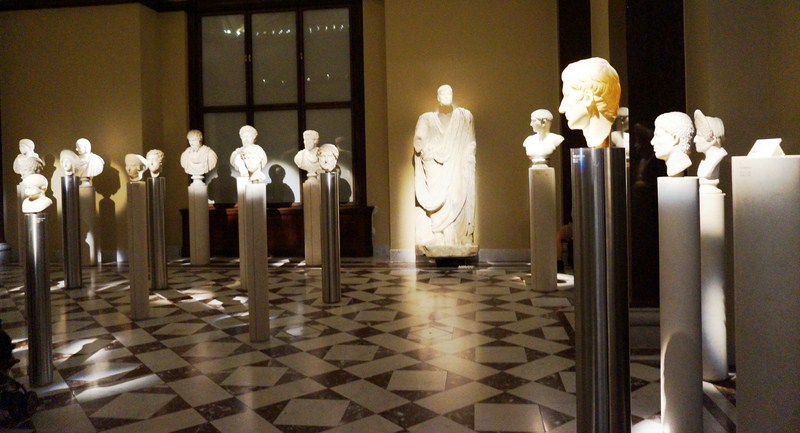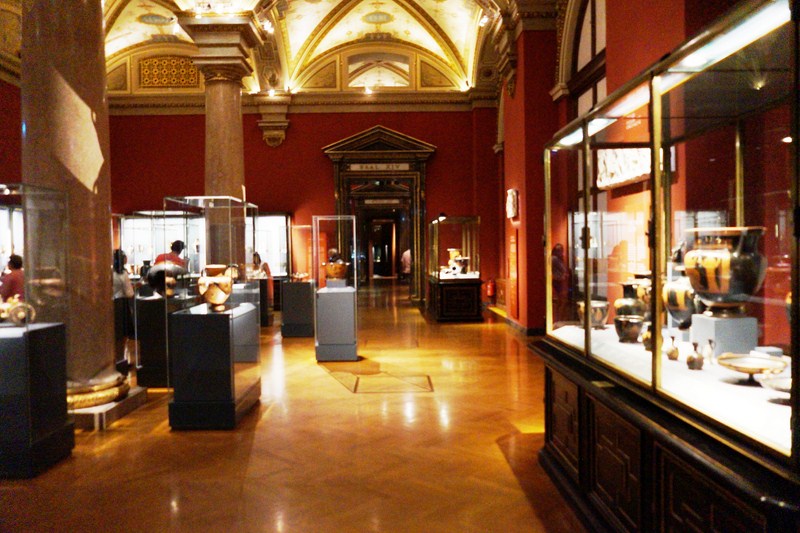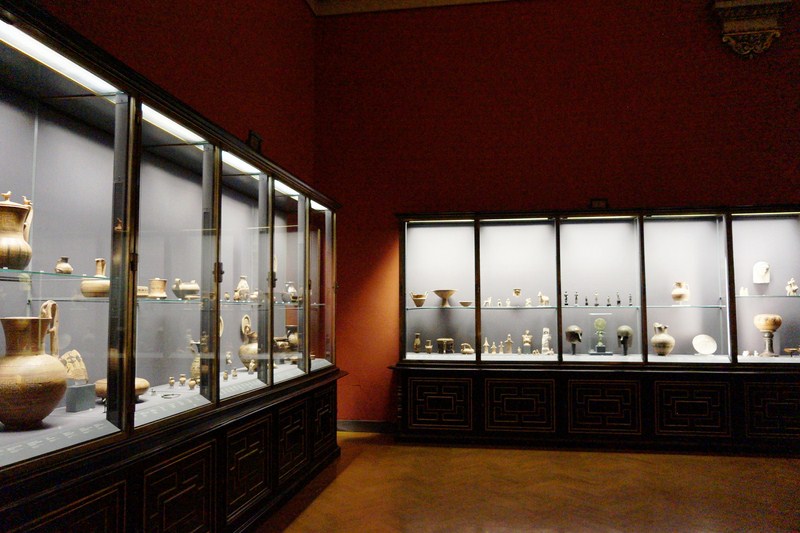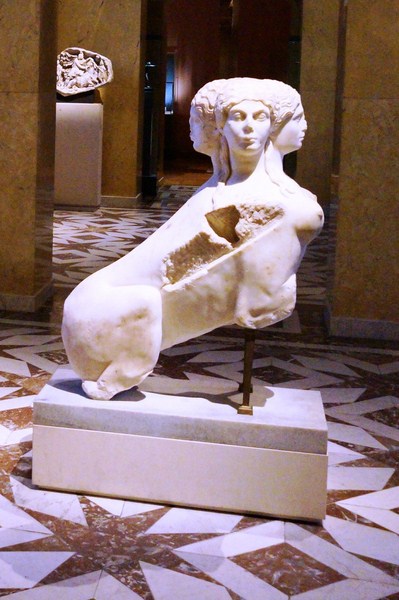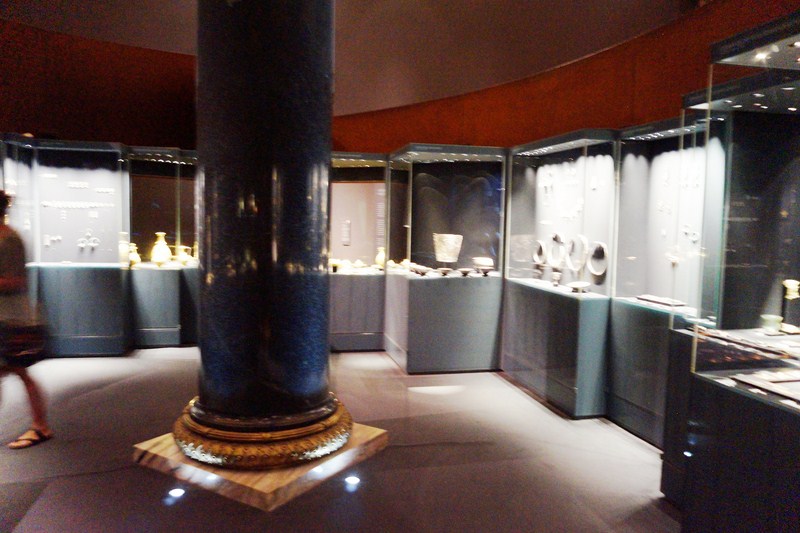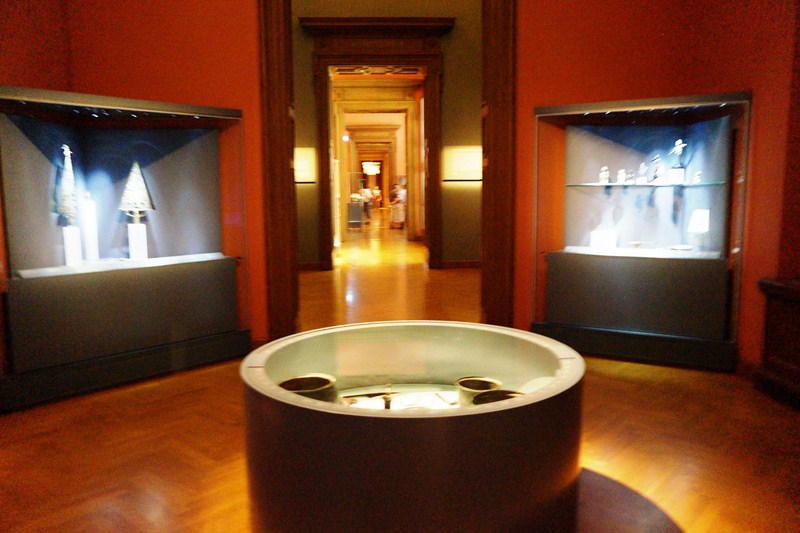From the Egyptian and Near Eastern Collection, a change of flooring and presentation, gave way to the delights of Ancient Greece and Rome with my entry into Gallery 10 and its Collection of Greek and Roman Antiquities.
The 2,500 objects in the collection, some on permanent display, span a period of more than three millennia and range from Bronze Age ceramics of Cyprus dating from the 3rd millennium B.C. to early Medieval finds.
Check out “Kunsthistorisches Museum“
This collection, one of the best of its kind, covers three main areas in a beautifully atmospheric gallery layout – the unique and spectacular antique cameos and gemstones; the treasure troves dating from the period of the great migrations and the early Middle Ages (such as the golden Treasure of Nagy Szent Miklós); and the collection of vases (with such masterpieces as the Brygos Cup).
Among the other highlights of the collection are the larger-than-life Votive Statue of a Man from Cyprus, the Amazonian Sarcophagus, the bronze tablet with the famous Senatus consultum de Bacchanalibus, the Theseus Mosaic from Salzburg and the Youth from the Magdalensberg, to name only a few.
However, though a lot of thought has been clearly put by the curators into how the items were displayed in this collection, surprisingly there was little English information for such wonderful displays and we needed an guidebook or an audio guide to really appreciate what we’re seeing.
At Gallery 11, we saw a huge original mosaic in the floor. Taken from a 4th century villa near Salzburg, it tells one of the versions of the story of Ariadne and Theseus (of Minotaur-slaying fame).
As we walked toward the entrance portal of Gallery 13, we were welcomed by a statue of a majestic Emperor Vespasian, his head is from 70 A.D. and his torso from sometime in the first century.
This bust gallery, possessing an eerie quality enhanced by the subtle and varied lighting and shadows cast on the marbled floor, has a delightful display of busts, each on its own high column. We also saw mummy portraits placed on mummies in Rome-influenced Egypt in the second century AD.
Gallery 14 features real Greek vases and other ceramics (not the kind from souvenir shops in Athens and Kos). The “Kabinetts,” leading off the rooms, each focus on a special topic such as Cypriot ceramics from the Bronze and Iron Ages, Etruscan Art, etc..
The magically dark Gallery 15 features bronze statues of the gods and other figures of mythology, each piece lit with pools of light that makes a dramatic impression, plus Roman tableware, jewelry, decorated oil lamps and fibulae (brooches for fastening clothing).
The darkly lit Gallery 16, with wall cabinets and spotlights, features brightly-colored miniature reliefs (cameos) and engraved gems from Rome which were used as signet rings, pendants and other adornments. The room also features the famous Gemma Augustea, a large cut onyx stone, from 9-12 A.D., honoring the Emperor Augustus.
Spot-lit cabinets at Gallery 17 house a wide range of Roman and early Germanic jewelry and other items of bronze, silver and gold coming from various finds, such as Nagy Szent Miklós (in modern-day Romania) or Zalesie (modern-day Poland).
Collection of Greek and Roman Antiquities: Raised Ground Floor, Kunsthistorisches Museum, Maria Theresien-Platz, 1010 Vienna. Tel: +43 1 525 24- 4902. E-mail: info.ansa@khm. Open Tuesdays – Sundays, 10 AM – 6 PM, Thursdays, 10 AM – 9 PM.

